REEL’s Research and Testing Facilities
REEL’s Air Flow Testing Facility
REEL has several airflow chambers that can be used to test and optimize air movement devices (fans, blowers, turbines) and static devices (duct terminations, vents, etc…) up to 6 feet in diameter with capacities from 1 to 50,000 cubic feet per minute. The test chambers are built to ANSI/AMCA Standard 210 (ASHRAE Standard 51), and HVI Procedure 916. Three chambers are primarily used for airflow and fan performance, these are configured for Figures 7, 12, 13 and 15. All these systems are controlled and monitored with state-of-the-art data acquisition systems.
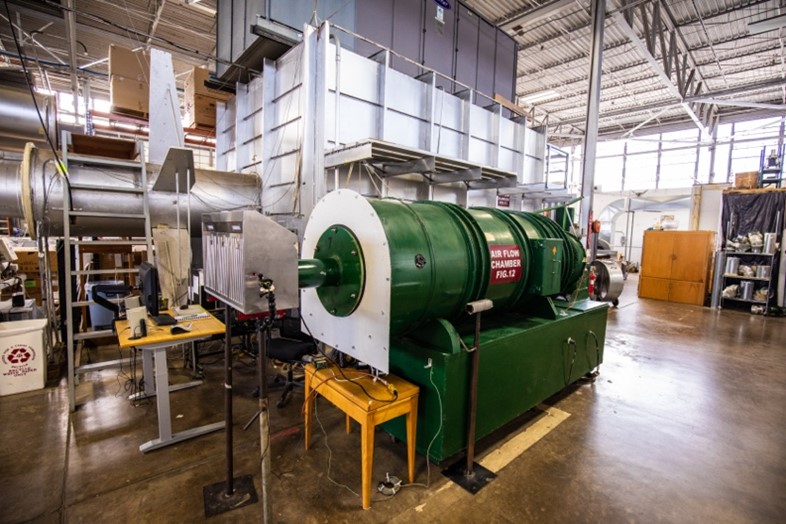 Figure 1. Airflow test chamber
Figure 1. Airflow test chamber
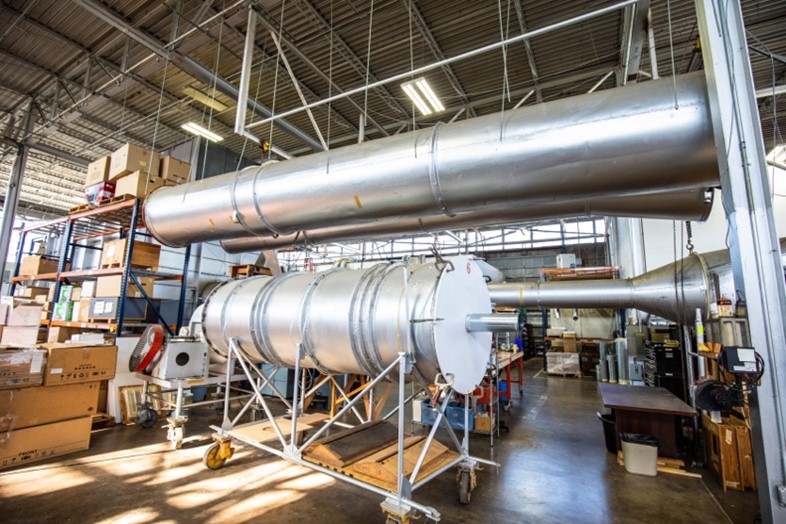 Figure 2. High capacity airflow testing chambers
Figure 2. High capacity airflow testing chambers
Semi-Reverberant Sound Room Facility
The Semi-Reverberant Sound Room Facility is an acoustically isolated room that is designed to reflect sound waves throughout the room and is equipped with a six-microphone array with a state-of-art high resolution digital analyzer and computer control. The semi-reverberant sound room is often used to test the sound level of small sound sources, such as residential home appliances and fans for HVI and Energy Star. This sound testing facility is compliant to ANSI/AMCA 300, EN-ISO 3743-1, and HVI Procedure 915.
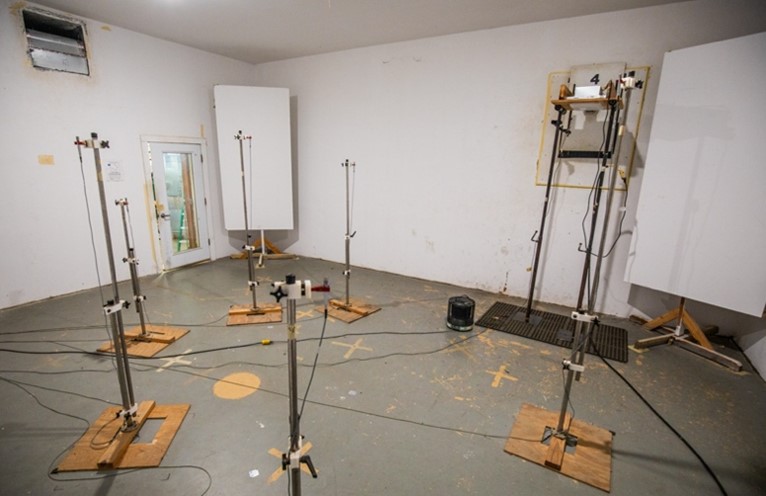 Figure 3. Reverberant sound testing chamber
Figure 3. Reverberant sound testing chamber
Range Hood Capture Efficiency Facility
Range Hood Capture Efficiency characterizes the effectiveness of kitchen range hoods to remove contaminants released by cooking, and REEL has developed one of the first publicly available test facilities that complies with ASTM-E3087.18. In this facility researchers and industry partners and clients can simulate a variety of real-life scenarios and situations that occur in a residential kitchen space, identifying a system’s rate of efficiency in circulation and removal of harmful emissions and overall promotion of a healthier indoor environment. This facility is controlled and monitored with state-of-the-art instruments and data acquisition systems.
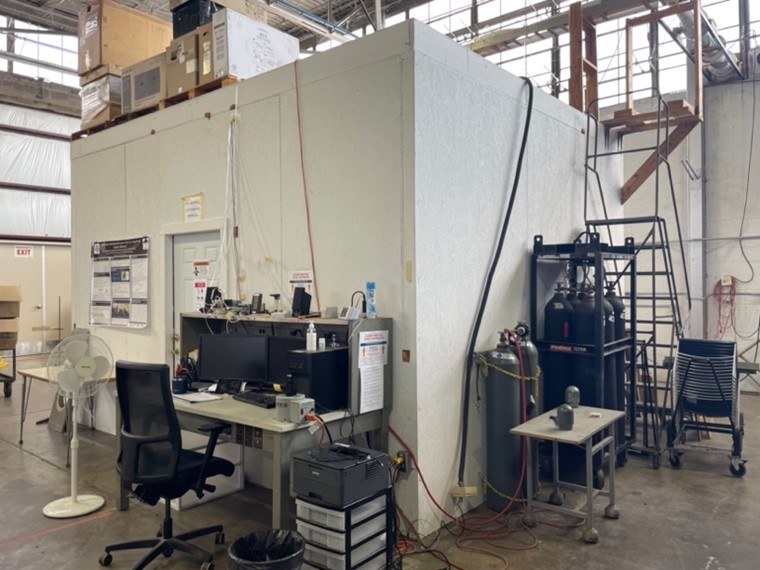 Figure 4. Rangehood capture efficiency facility
Figure 4. Rangehood capture efficiency facility
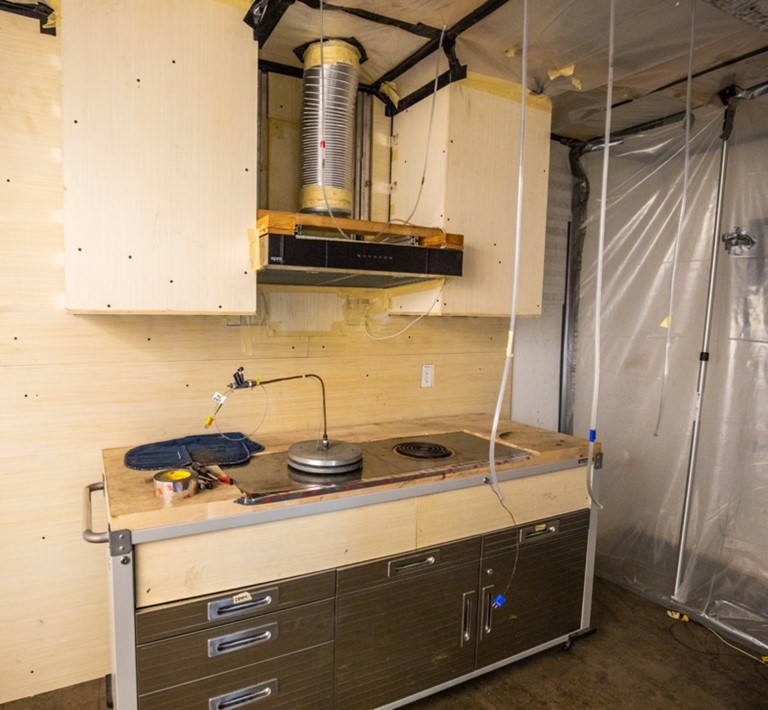 Figure 5. Inside the rangehood capture facility
Figure 5. Inside the rangehood capture facility
Heating and Energy Recovery (H/ERV) Ventilator Facility
Heating and energy recovery ventilations are a type of air-to-air energy exchanger used in heating, ventilation, and air conditioning (HVAC) applications for energy recovery and conservation. The testing of H/ERVs is important for performance evaluation and product development and refinement. REEL’s H/ERV test bed is currently operational for testing of both HRVs and ERVs with humidity control at desired airflow and temperatures that are suited for simulation in hot and humid environments. Units of different duct configurations can be tested. This facility is controlled and monitored with state-of-the-art instruments and data acquisition systems.
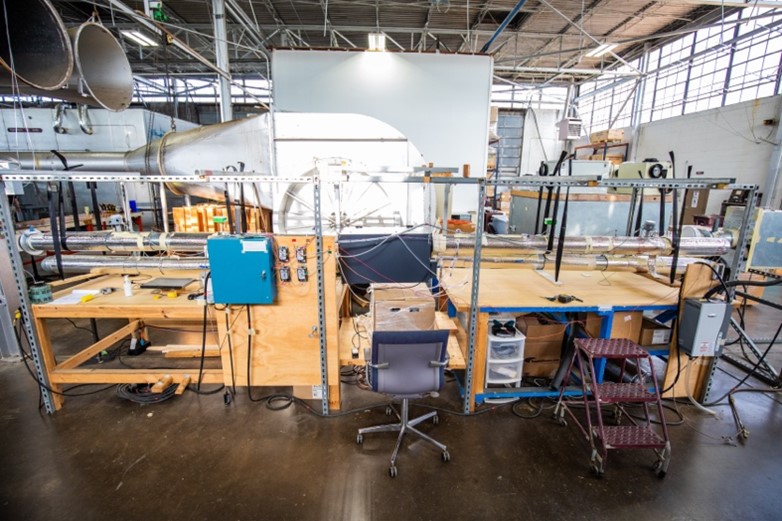 Figure 6. H/ERV testing facility
Figure 6. H/ERV testing facility
Fixed Bed Regenerator Test Facility
Fixed-bed regenerator (FBR) is also a newer type of air-to-air energy exchanger and recently introduced for energy recovery applications in HVAC applications. The testing and evaluation of these FBRs is important for the development and refinement of these products and the development of testing methods for these newer HVAC systems. This facility is controlled and monitored with state-of-the-art instruments and data acquisition systems.
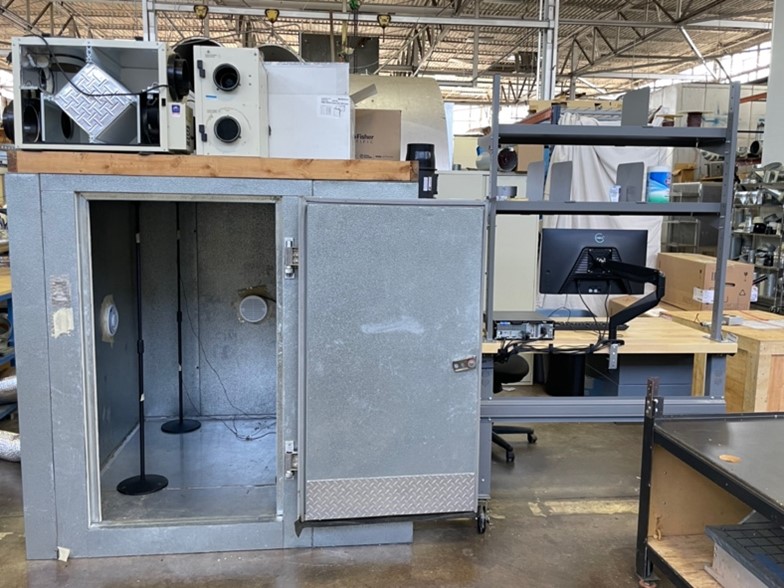 Figure 7. Fixed bed regenerator test facility
Figure 7. Fixed bed regenerator test facility
Psychrometric Testing Chambers
REEL’s Psychrometric Test Facility provides a controlled environment for testing air conditioning and heat pump systems. This facility is fully instrumented and computerized to monitor and record dry bulb, wet bulb and dew point temperatures from +10 to +120º F, and to measure relative humidity from 5% to 95%. The facility can accommodate equipment up to 10-tons in capacity and can measure air flow rates from 150 to 5,000 CFM. This test facility complies with ASHRAE Standards 116 and ARI 210/240.
 Figure 8. Psychrometric testing chambers
Figure 8. Psychrometric testing chambers
Smart Building Research Facility
REEL is also home to research in smart building research under the leadership Dr. Zheng O’Neill. The Texas A&M Heat Pump (HP) testbed has developed and is operated by the Building Energy and HVAC&R research group for research, evaluation, and development of heat pump-based technologies for next-generation efficient buildings. The testbed’s capability of controlling and capturing the heat pump operation dynamic offers a unique R&D opportunity for prototyping and testing of heat pump technologies and developing intelligent algorithms for control and diagnostic enabling grid-interactive and energy-efficient buildings.
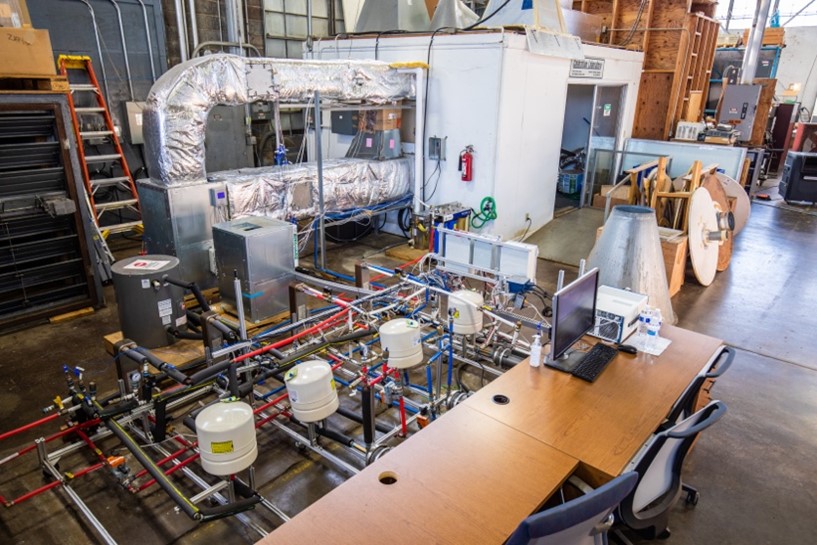 Figure 9. Heat pump testbed
Figure 9. Heat pump testbed
Adjacent to REEL is also the Texas A&M Smart and Connected Home Testbed (TAMSCHT) and has also been developed and is operated by the Building Energy and HVAC&R research group for the research and development of smart, connected, energy efficient, and grid-interactive technologies for residential buildings.
 Figure 10. Smart connected home testbed
Figure 10. Smart connected home testbed
Low Temperature Organic Rankine Cycle (ORC) Test Facility
REEL’s Low Temperature ORC Test Facility provides the capability of testing and evaluating the efficiency of organic working fluids at temperatures as low as 40F. The equipment, which includes the heat exchangers, pumps, and turbine, were specially chosen or designed to meet the operating requirements for those low temperatures. State-of-the-art data acquisition systems are used to monitor the test loop during operation and includes a control system to adjust the flow rate of the working fluid. This research is important for determining new applications and/or the optimization of Organic Rankine Cycles for producing power at low temperatures.
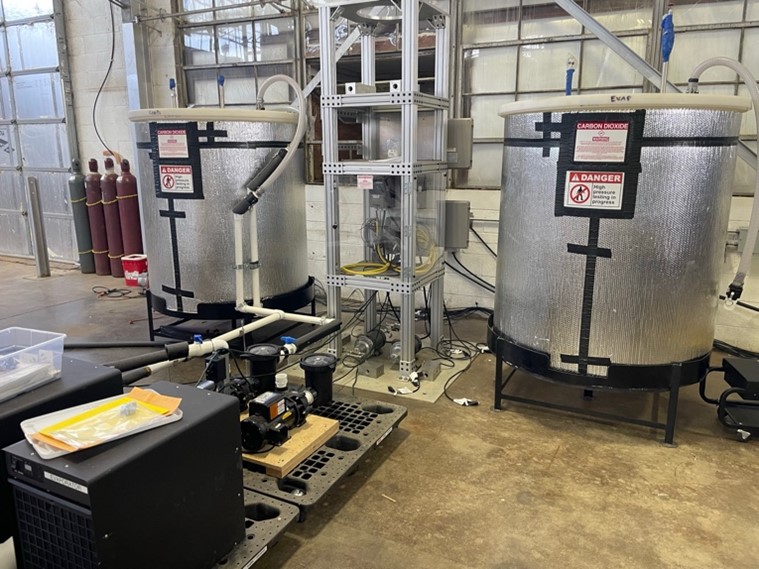 Figure 11. Low temperature Organic Rankine Cycle research facility
Figure 11. Low temperature Organic Rankine Cycle research facility

